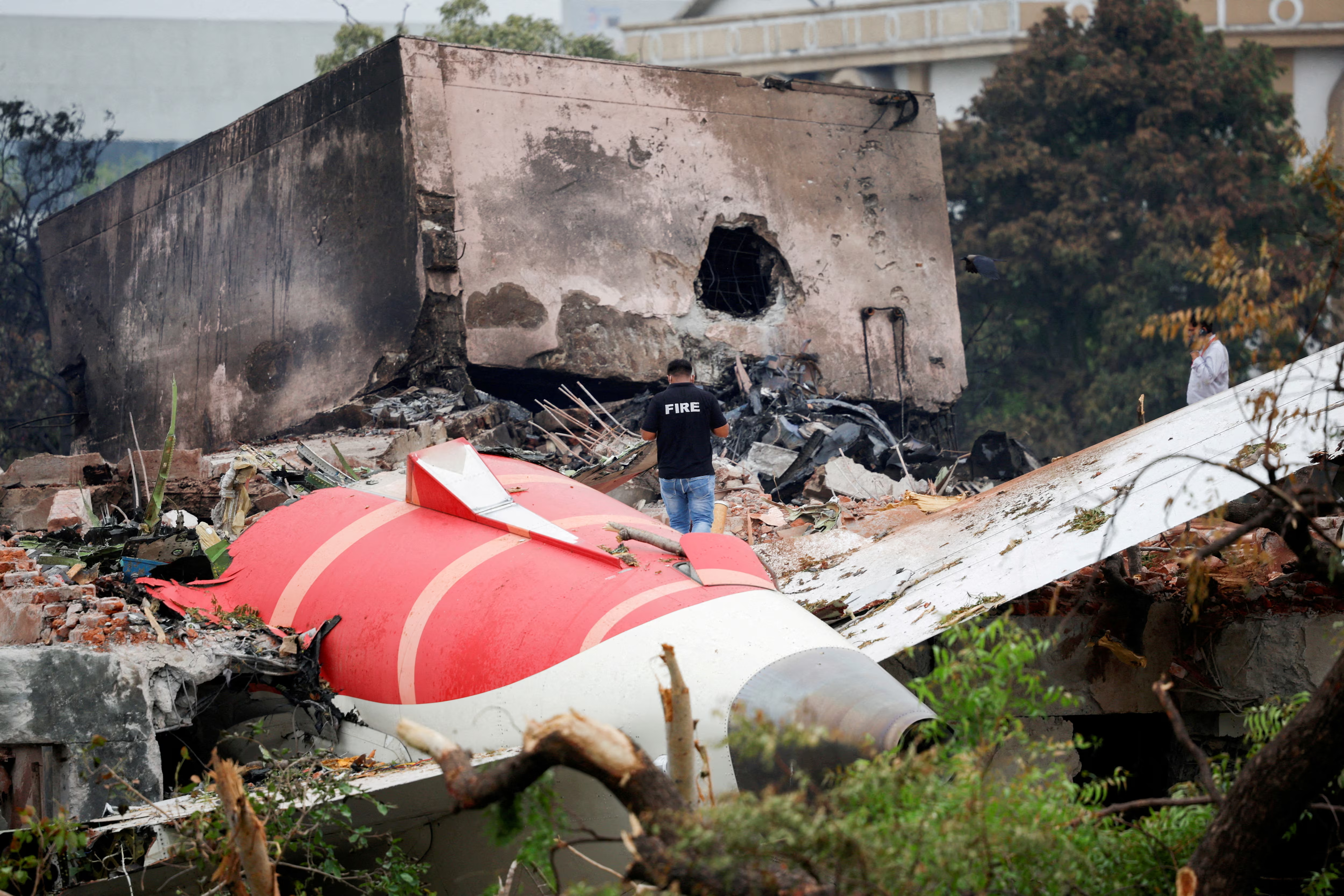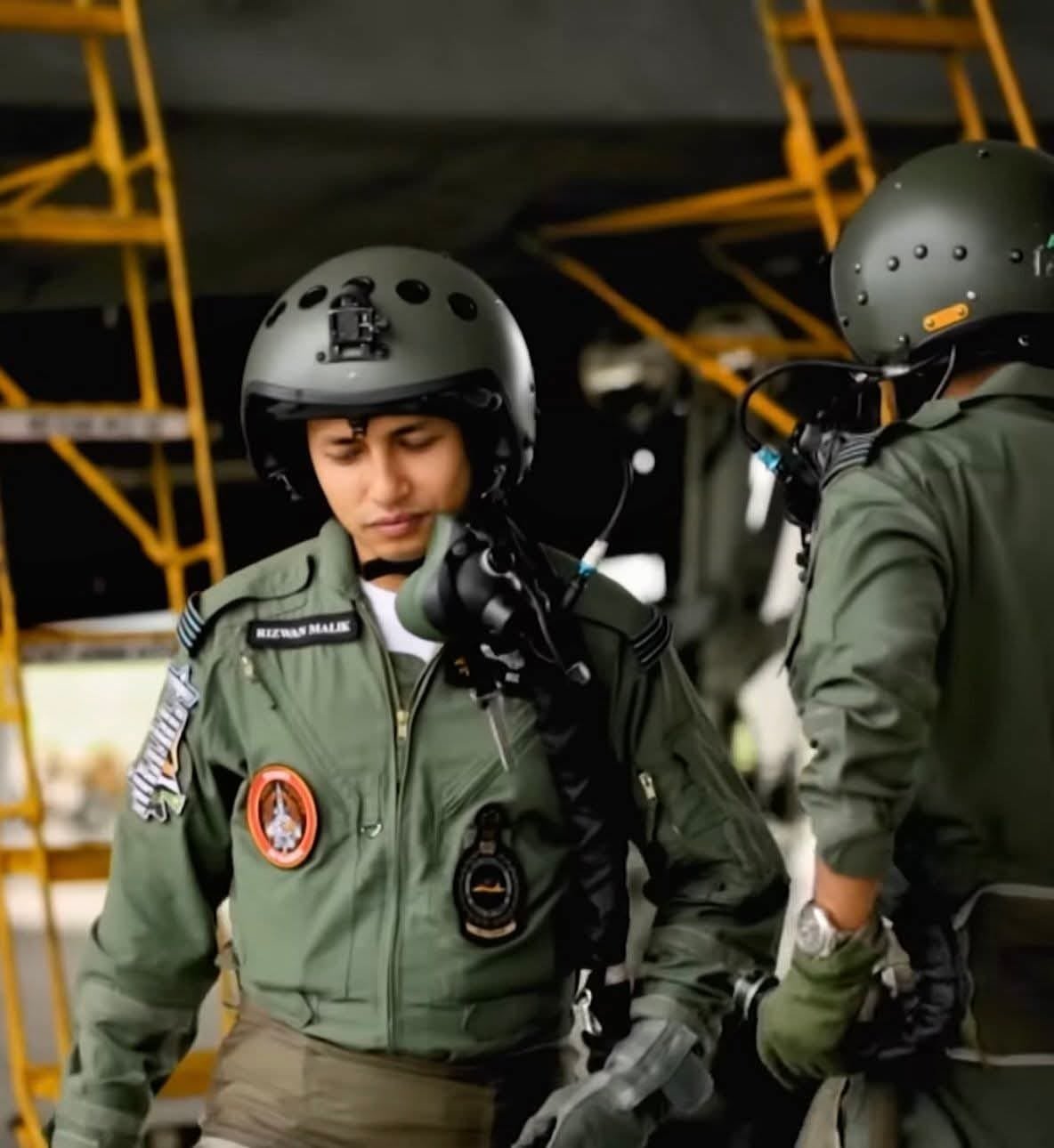Air India Crash Report Reveals Fuel Cutoff Switches Were Manually Deactivated: A Closer Look at the Tragic Flight AI-171 Incident

In a deeply unsettling revelation, the preliminary findings from the Aircraft Accident Investigation Bureau (AAIB) of India have indicated that both engine fuel cutoff switches on Air India Flight AI-171 were manually turned off just seconds after takeoff, leading to the tragic crash that claimed 97 lives. The findings have opened up new avenues of inquiry, raising troubling questions about cockpit procedures, pilot intentions, and aviation safety protocols.
On June 12, 2024, Air India’s Boeing 787 Dreamliner, flight AI-171, took off from Ahmedabad bound for Dubai. The aircraft was heavily loaded, carrying 54 tones of fuel and operating near its maximum takeoff weight. Eyewitnesses on the ground and early radar data showed the aircraft struggling to climb, stalling, and eventually crashing near the airport perimeter just 29 seconds after takeoff.
Until now, speculation surrounded the cause ranging from mechanical failure to external sabotage. However, the AAIB’s preliminary report has firmly identified an unexpected and disturbing scenario: both engine fuel cutoff switches were manually set to 'cutoff' within three seconds after liftoff, essentially cutting the fuel supply to the engines and causing them to shut down mid-climb.
Fuel cutoff switches are designed to halt fuel flow to the engines in an emergency, such as an engine fire. These switches are protected by safety covers and require deliberate manual action to activate. The AAIB report notes that the switches were moved to the 'cutoff' position almost simultaneously just one second apart suggesting purposeful and coordinated movement.
Even more concerning is the cockpit voice recorder transcript, which captures a brief and disoriented exchange between the pilots:
Pilot 1: “Why did you cut off?”
Pilot 2: “I didn’t.”
This exchange has fueled intense speculation about what occurred in the cockpit. Aviation experts have been quick to point out that accidental activation of these switches is highly unlikely. According to The Times (UK) and Reuters, these switches require deliberate action and are not located in an area easily triggered by mistake.
The aircraft manufacturer Boeing and engine maker GE were quick to provide technical support during the investigation. The report confirms that no mechanical faults or design failures were found in the aircraft systems, engines, or fuel management hardware. In fact, the AAIB has not issued any design recommendations or corrective actions against either manufacturer, further supporting the theory of human-induced failure.
Moreover, the aircraft’s emergency systems responded as expected. The Ram Air Turbine (RAT) deployed automatically, indicating that the aircraft lost power to essential systems, including hydraulics and electronics, after the engines flamed out.
This is the most difficult question and one that the preliminary report does not answer.
The pilots were both experienced and had logged over 3,000 hours each on the Dreamliner. There were no signs of fatigue, and both had passed routine psychological and physical evaluations in the months prior. No distress signal or mechanical warning prompted the cutoff, and the timeline shows that they attempted to restart at least one engine within 15 seconds of the flameout though it was too late to recover altitude.
Aviation psychologist Dr. Prateek Verma told News.com.au, “This could indicate a moment of panic, confusion, or more worryingly intentional sabotage or mental health breakdown.” However, he cautioned against premature judgment until the final report is released.
There is also a historical note of concern: in 2018, the U.S. FAA issued an advisory bulletin on potential vulnerabilities in switch protections on similar aircraft. While not mandatory, it recommended additional locking mechanisms. Air India, like many airlines, did not implement those changes.
The findings have left the aviation world shaken. While rare, there have been incidents in aviation history such as Germanwings Flight 9525 where human factors led to catastrophic outcomes. However, the nature of this switch activation, followed by an apparent attempt to recover, has puzzled experts.
Captain Surya Narayan, a retired Air India senior pilot, commented, “This is a nightmare scenario. The switches are our last resort. For both to be turned off seconds after takeoff, with no external cause, defies logic.”
The AAIB has stated that a final report will be published within six to nine months, incorporating toxicology reports, personal histories of the flight crew, and simulation testing. In the meantime, Air India has grounded two similar aircraft for precautionary inspections and has initiated internal reviews of cockpit procedures.
The Directorate General of Civil Aviation (DGCA) has also issued advisories for all Indian carriers to conduct retraining on fuel cutoff procedures and re-evaluate cockpit switch ergonomics.
The Air India AI-171 crash is now emerging not as a story of mechanical failure but of human action whether mistaken or deliberate. While the final answers remain elusive, this report has already triggered waves across global aviation sectors. It reminds us of the thin line between routine flight and disaster and the critical importance of understanding both man and machine.
Until all facts are in, the industry and the families of those who perished must wait for the full truth to surface.
On June 12, 2024, Air India’s Boeing 787 Dreamliner, flight AI-171, took off from Ahmedabad bound for Dubai. The aircraft was heavily loaded, carrying 54 tones of fuel and operating near its maximum takeoff weight. Eyewitnesses on the ground and early radar data showed the aircraft struggling to climb, stalling, and eventually crashing near the airport perimeter just 29 seconds after takeoff.
Until now, speculation surrounded the cause ranging from mechanical failure to external sabotage. However, the AAIB’s preliminary report has firmly identified an unexpected and disturbing scenario: both engine fuel cutoff switches were manually set to 'cutoff' within three seconds after liftoff, essentially cutting the fuel supply to the engines and causing them to shut down mid-climb.
Fuel cutoff switches are designed to halt fuel flow to the engines in an emergency, such as an engine fire. These switches are protected by safety covers and require deliberate manual action to activate. The AAIB report notes that the switches were moved to the 'cutoff' position almost simultaneously just one second apart suggesting purposeful and coordinated movement.
Even more concerning is the cockpit voice recorder transcript, which captures a brief and disoriented exchange between the pilots:
Pilot 1: “Why did you cut off?”
Pilot 2: “I didn’t.”
This exchange has fueled intense speculation about what occurred in the cockpit. Aviation experts have been quick to point out that accidental activation of these switches is highly unlikely. According to The Times (UK) and Reuters, these switches require deliberate action and are not located in an area easily triggered by mistake.
The aircraft manufacturer Boeing and engine maker GE were quick to provide technical support during the investigation. The report confirms that no mechanical faults or design failures were found in the aircraft systems, engines, or fuel management hardware. In fact, the AAIB has not issued any design recommendations or corrective actions against either manufacturer, further supporting the theory of human-induced failure.
Moreover, the aircraft’s emergency systems responded as expected. The Ram Air Turbine (RAT) deployed automatically, indicating that the aircraft lost power to essential systems, including hydraulics and electronics, after the engines flamed out.
This is the most difficult question and one that the preliminary report does not answer.
The pilots were both experienced and had logged over 3,000 hours each on the Dreamliner. There were no signs of fatigue, and both had passed routine psychological and physical evaluations in the months prior. No distress signal or mechanical warning prompted the cutoff, and the timeline shows that they attempted to restart at least one engine within 15 seconds of the flameout though it was too late to recover altitude.
Aviation psychologist Dr. Prateek Verma told News.com.au, “This could indicate a moment of panic, confusion, or more worryingly intentional sabotage or mental health breakdown.” However, he cautioned against premature judgment until the final report is released.
There is also a historical note of concern: in 2018, the U.S. FAA issued an advisory bulletin on potential vulnerabilities in switch protections on similar aircraft. While not mandatory, it recommended additional locking mechanisms. Air India, like many airlines, did not implement those changes.
The findings have left the aviation world shaken. While rare, there have been incidents in aviation history such as Germanwings Flight 9525 where human factors led to catastrophic outcomes. However, the nature of this switch activation, followed by an apparent attempt to recover, has puzzled experts.
Captain Surya Narayan, a retired Air India senior pilot, commented, “This is a nightmare scenario. The switches are our last resort. For both to be turned off seconds after takeoff, with no external cause, defies logic.”
The AAIB has stated that a final report will be published within six to nine months, incorporating toxicology reports, personal histories of the flight crew, and simulation testing. In the meantime, Air India has grounded two similar aircraft for precautionary inspections and has initiated internal reviews of cockpit procedures.
The Directorate General of Civil Aviation (DGCA) has also issued advisories for all Indian carriers to conduct retraining on fuel cutoff procedures and re-evaluate cockpit switch ergonomics.
The Air India AI-171 crash is now emerging not as a story of mechanical failure but of human action whether mistaken or deliberate. While the final answers remain elusive, this report has already triggered waves across global aviation sectors. It reminds us of the thin line between routine flight and disaster and the critical importance of understanding both man and machine.
Until all facts are in, the industry and the families of those who perished must wait for the full truth to surface.







